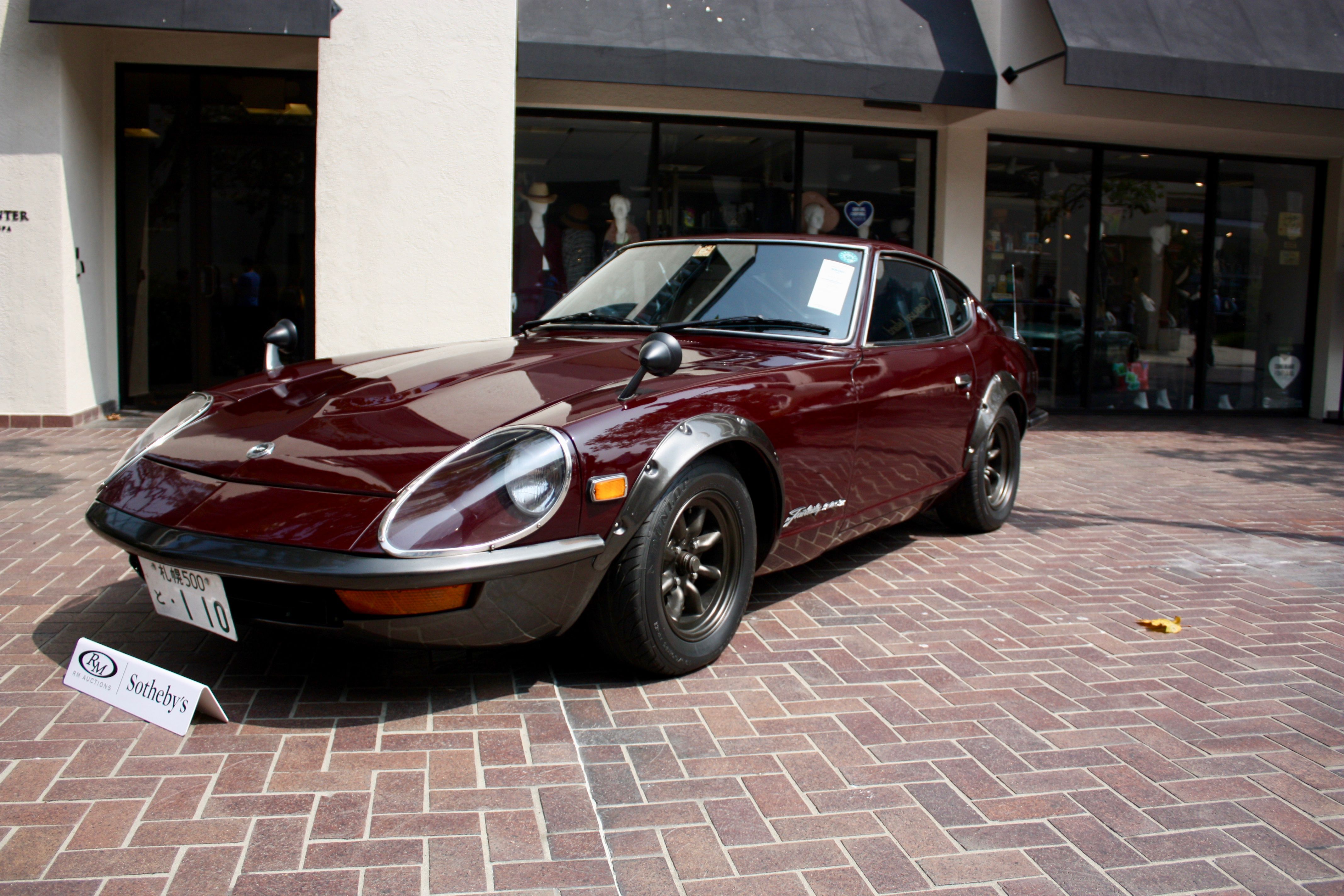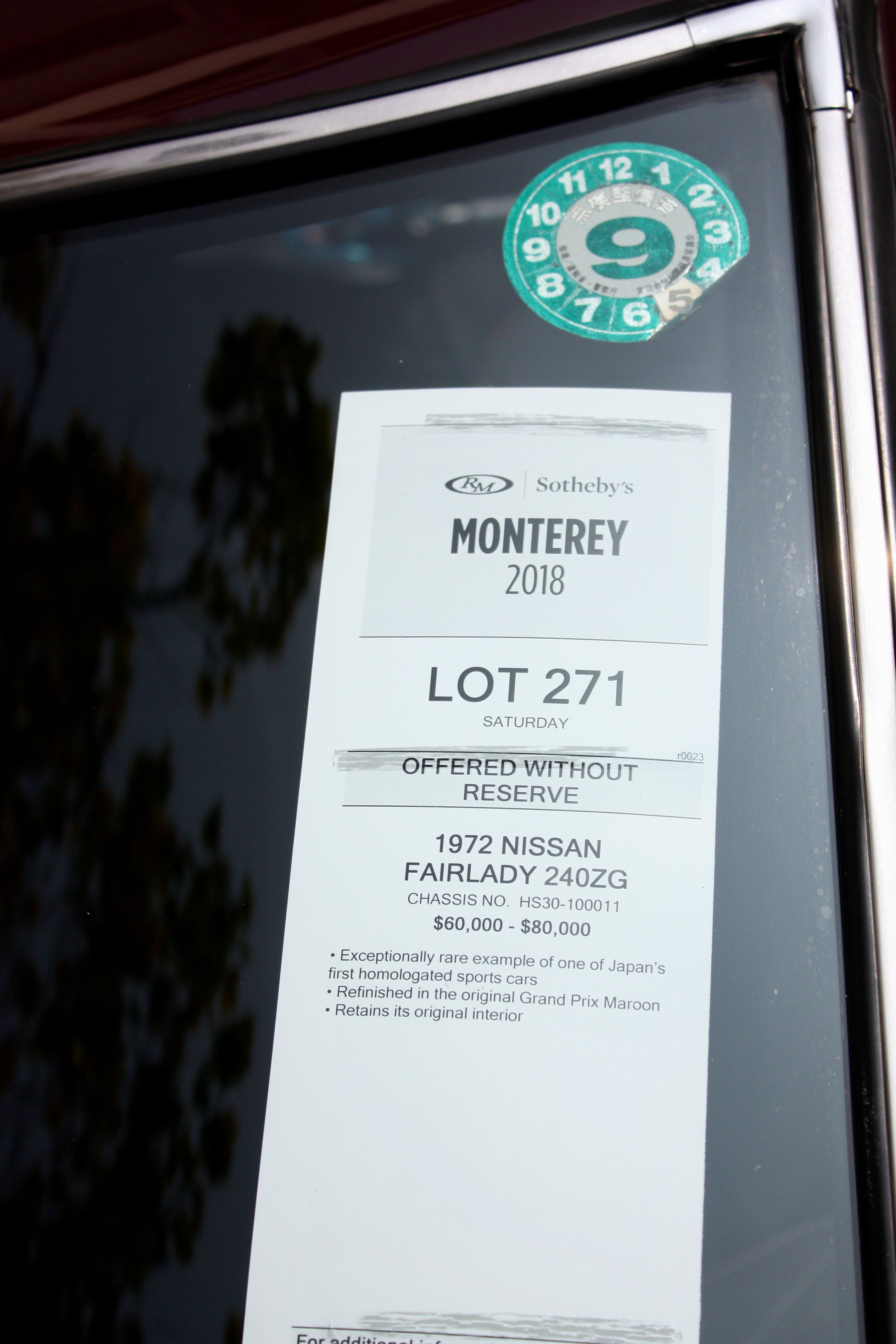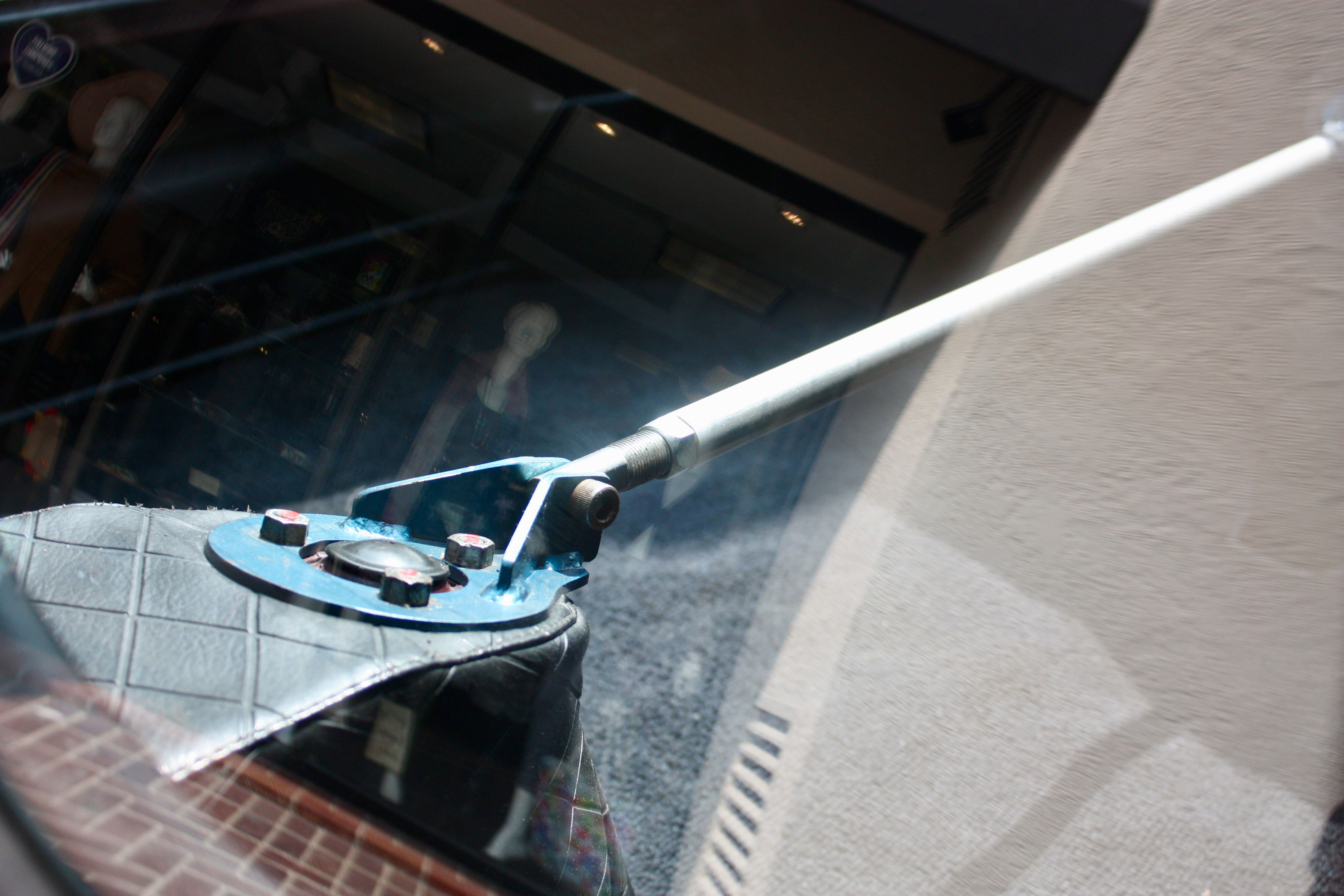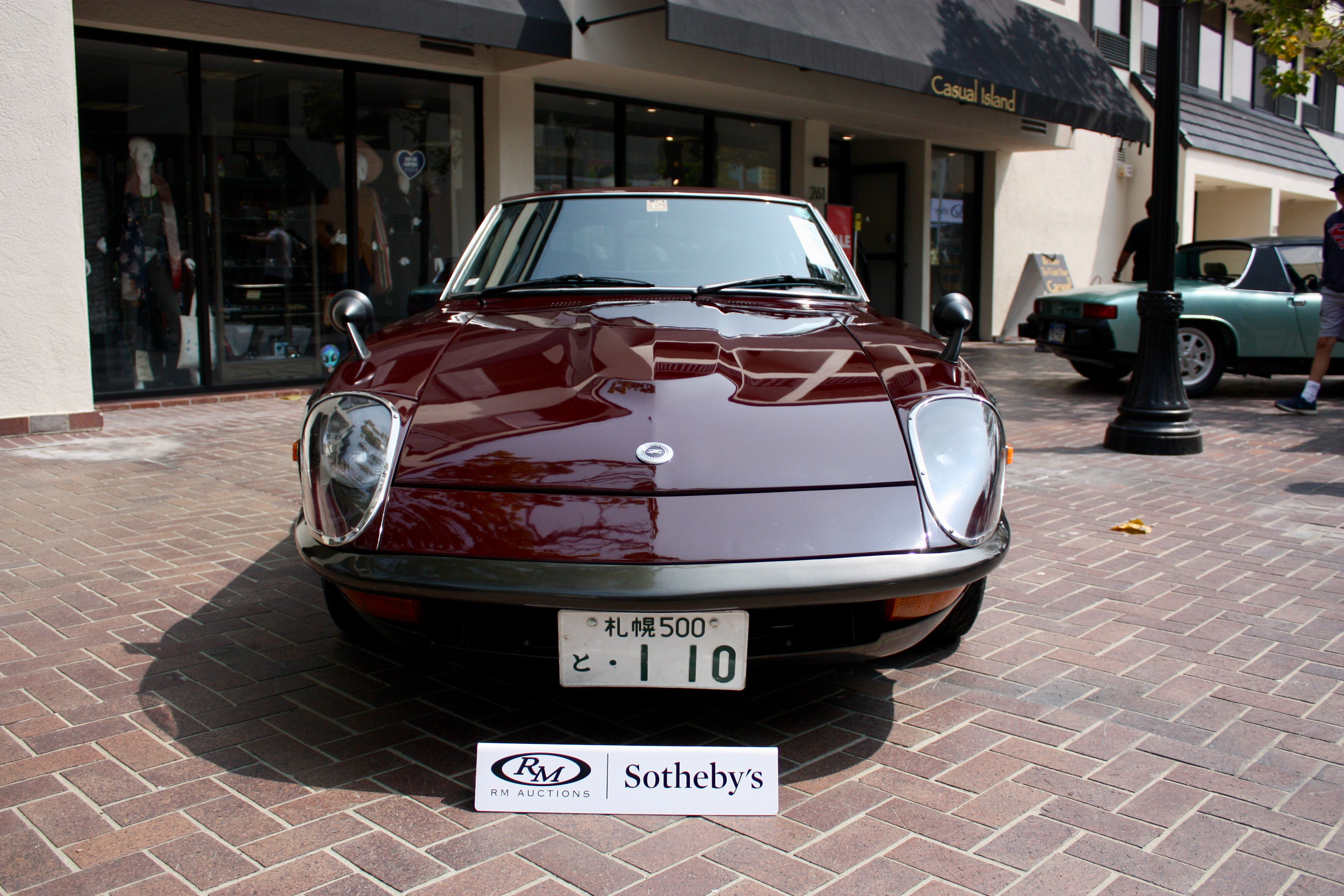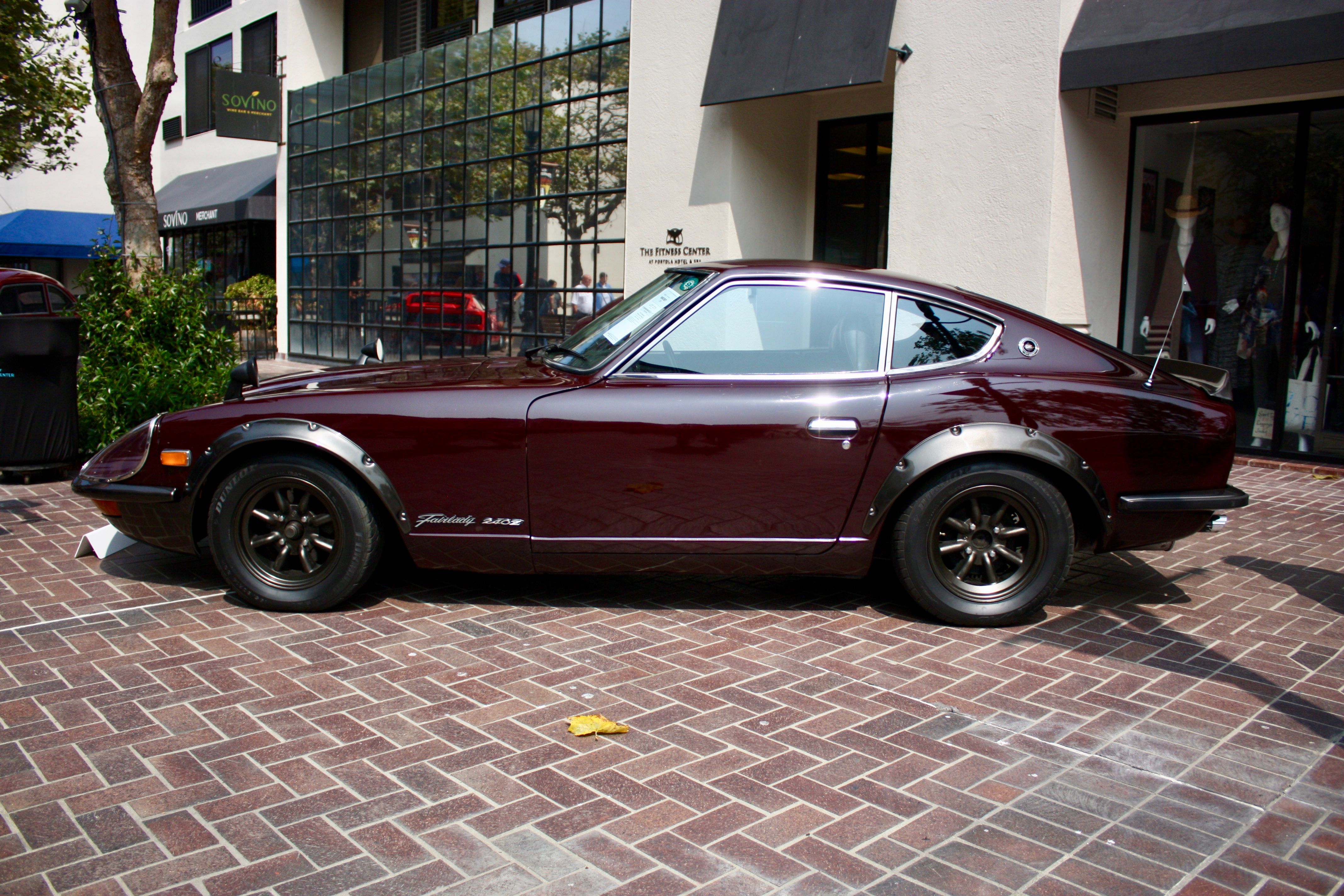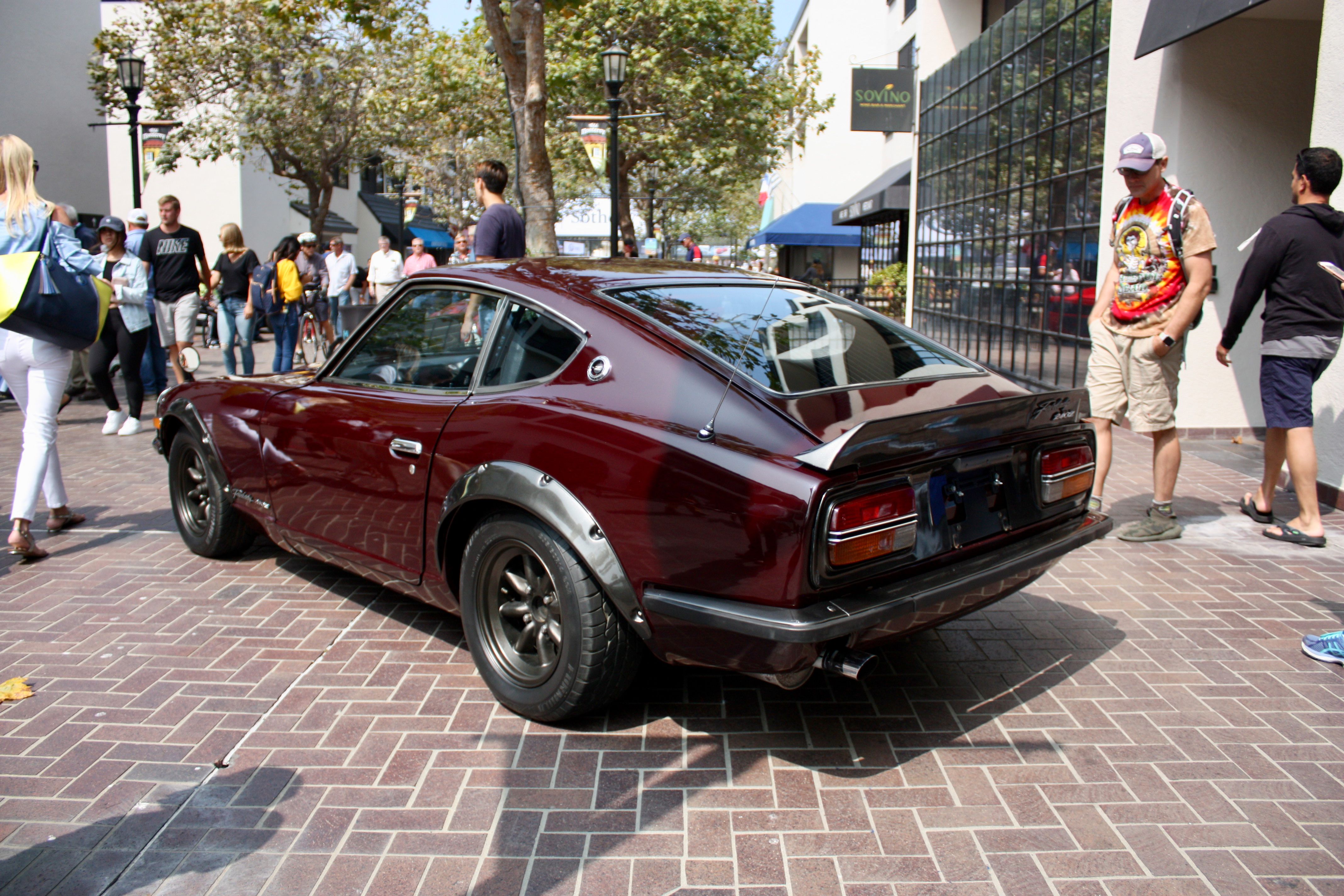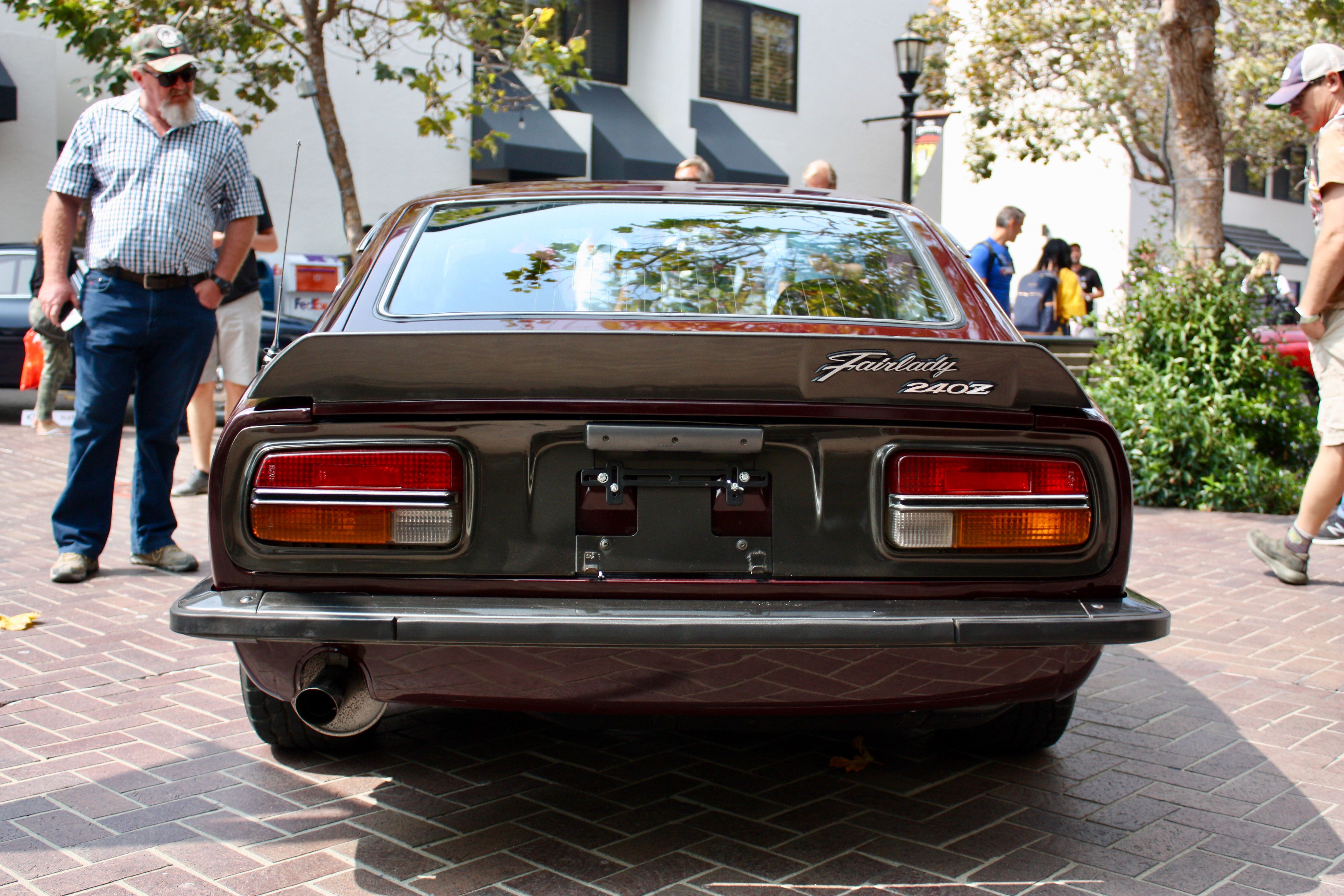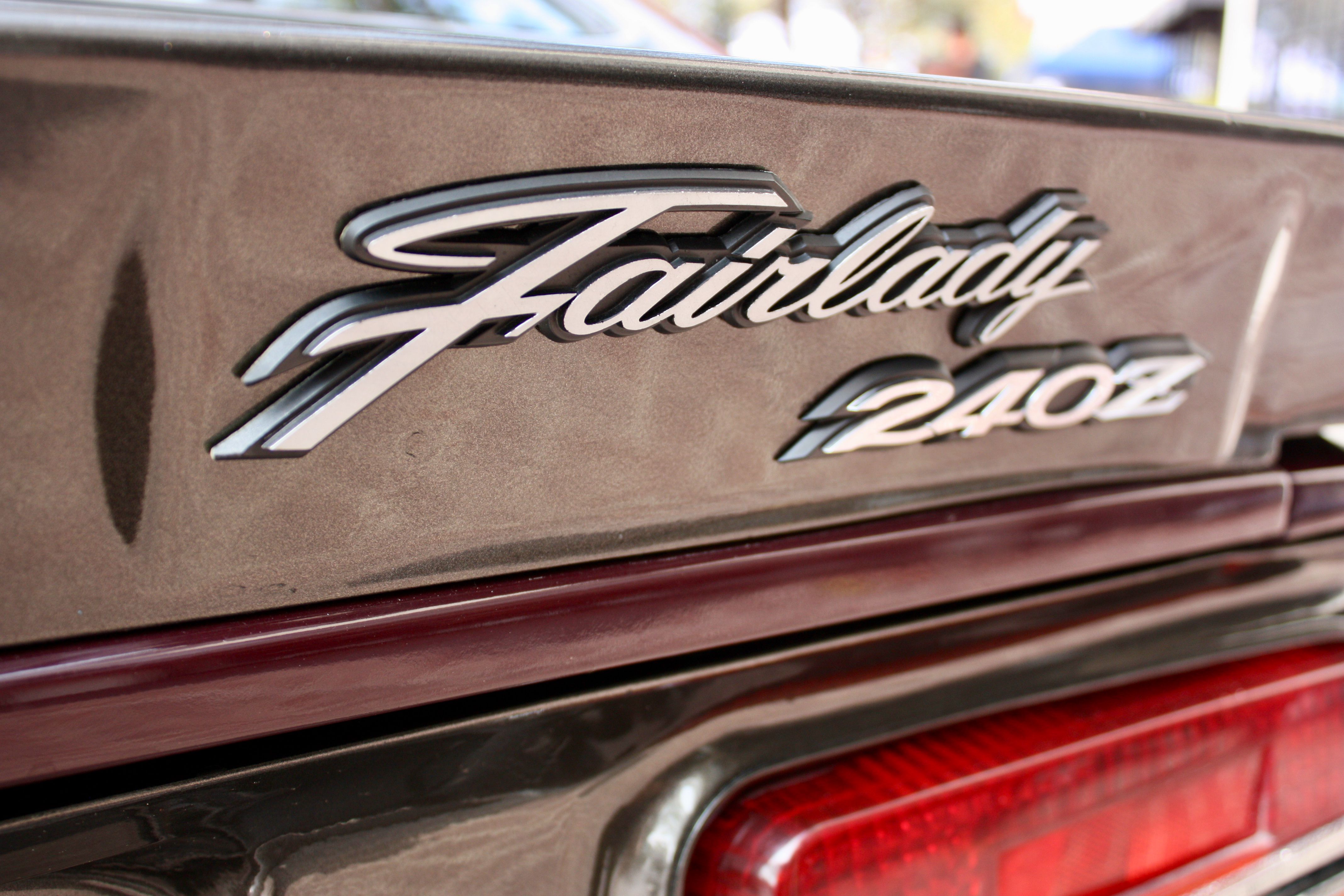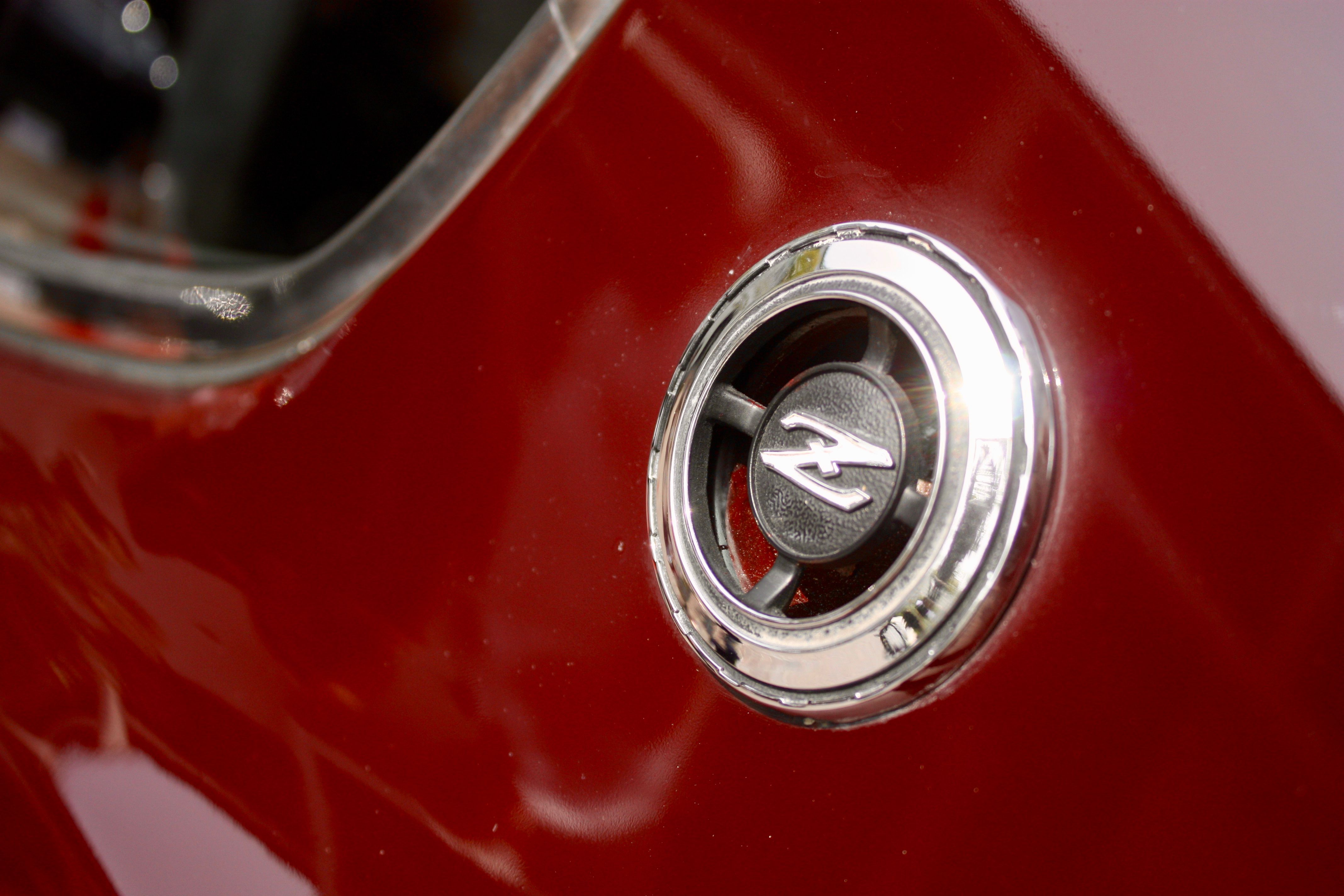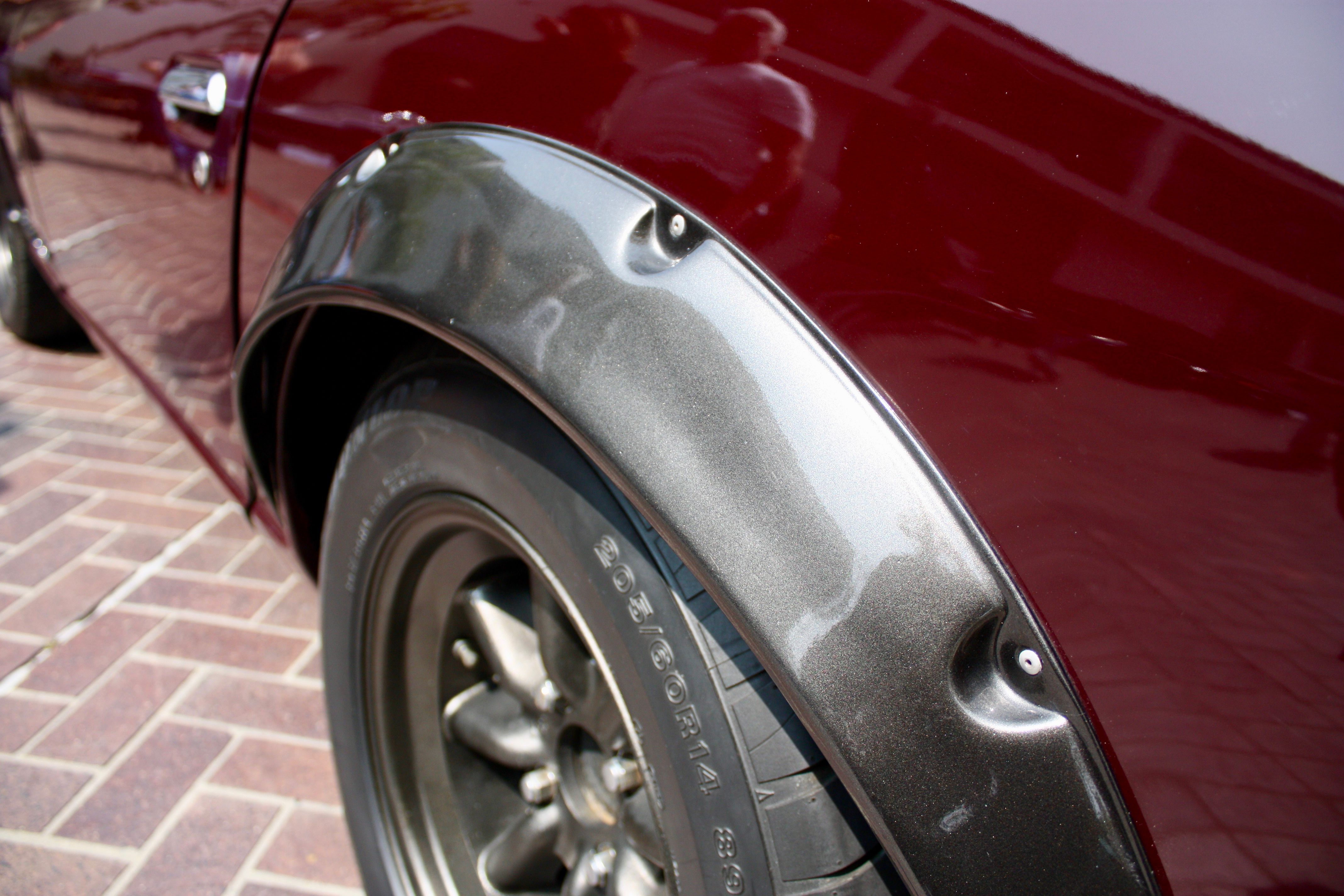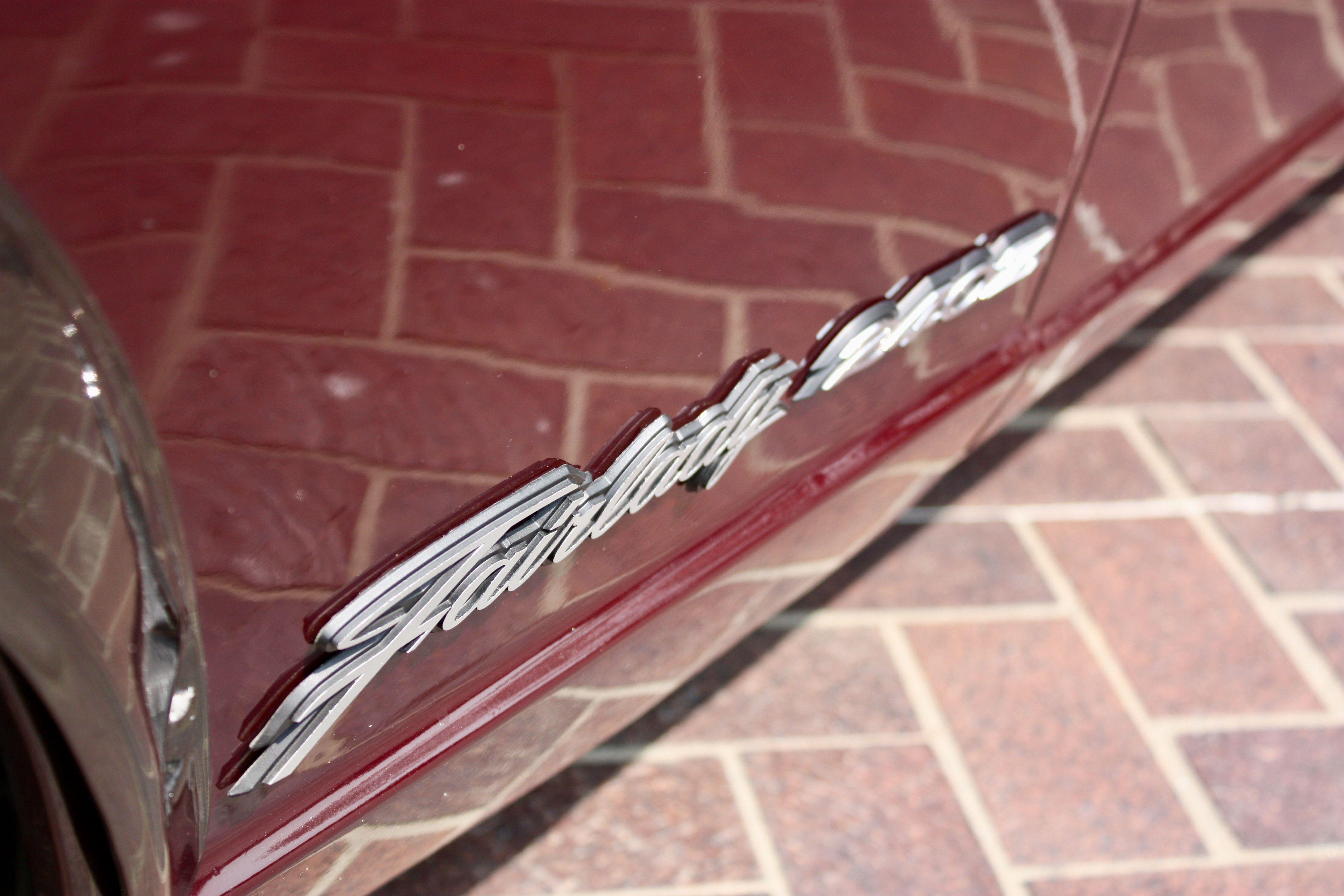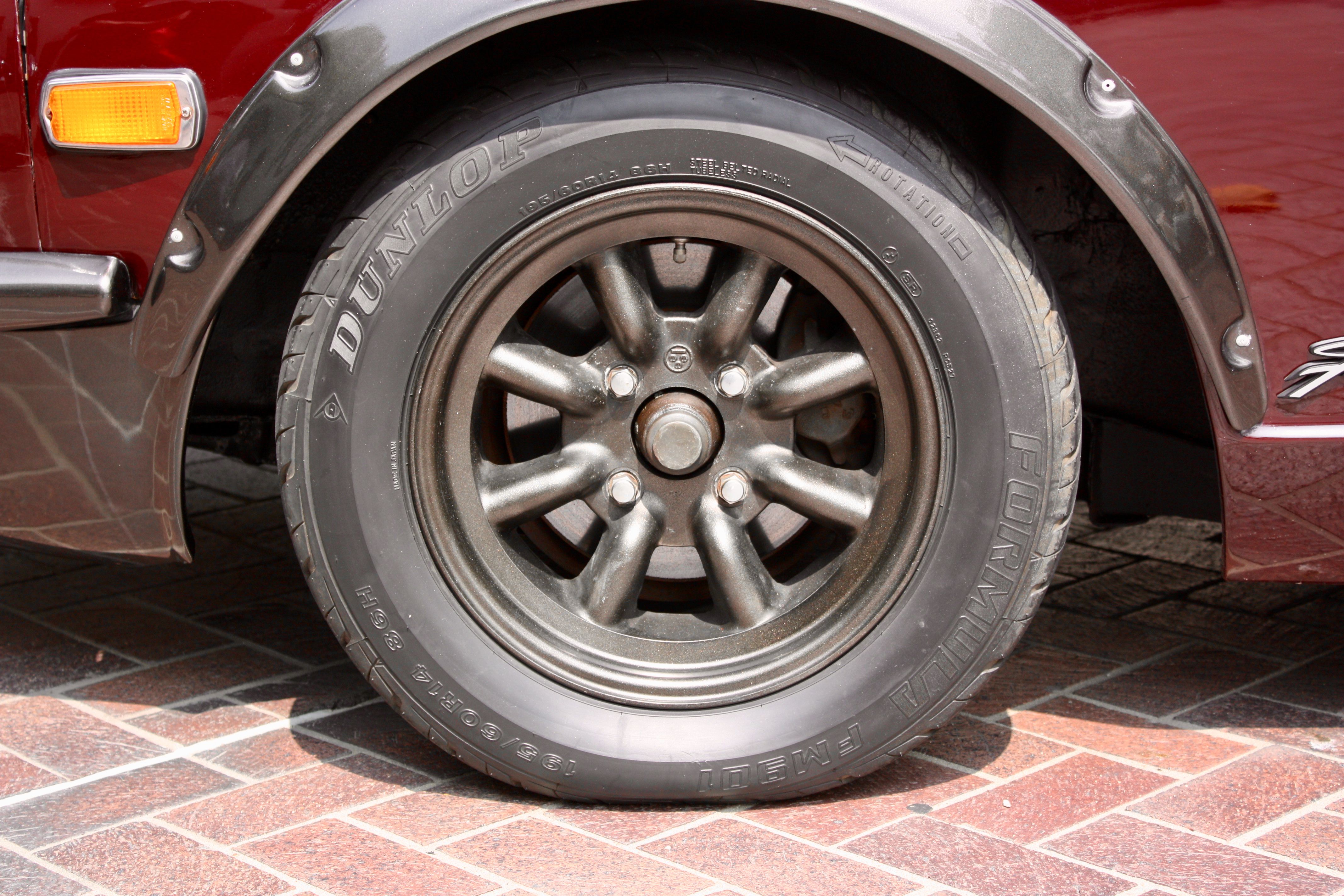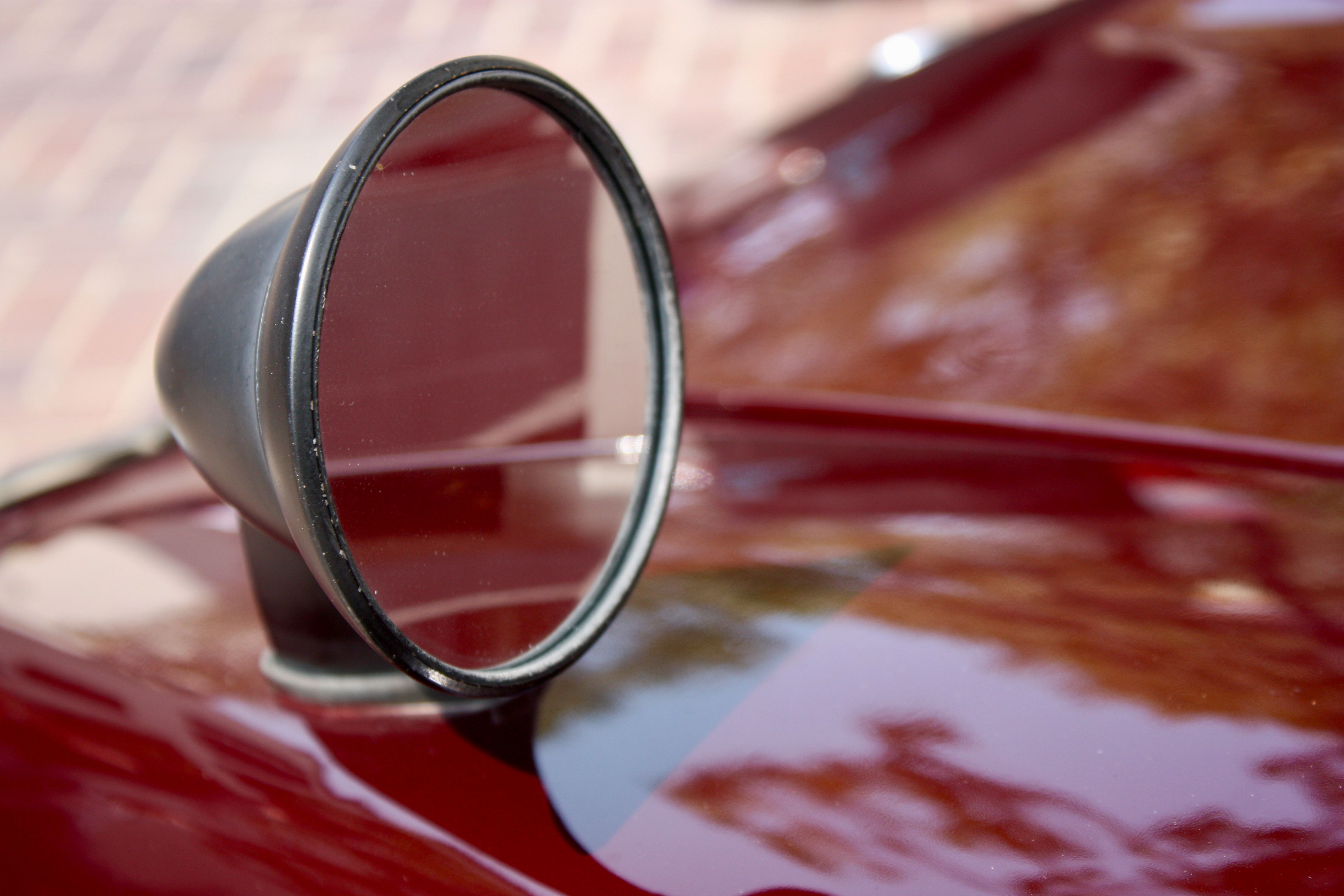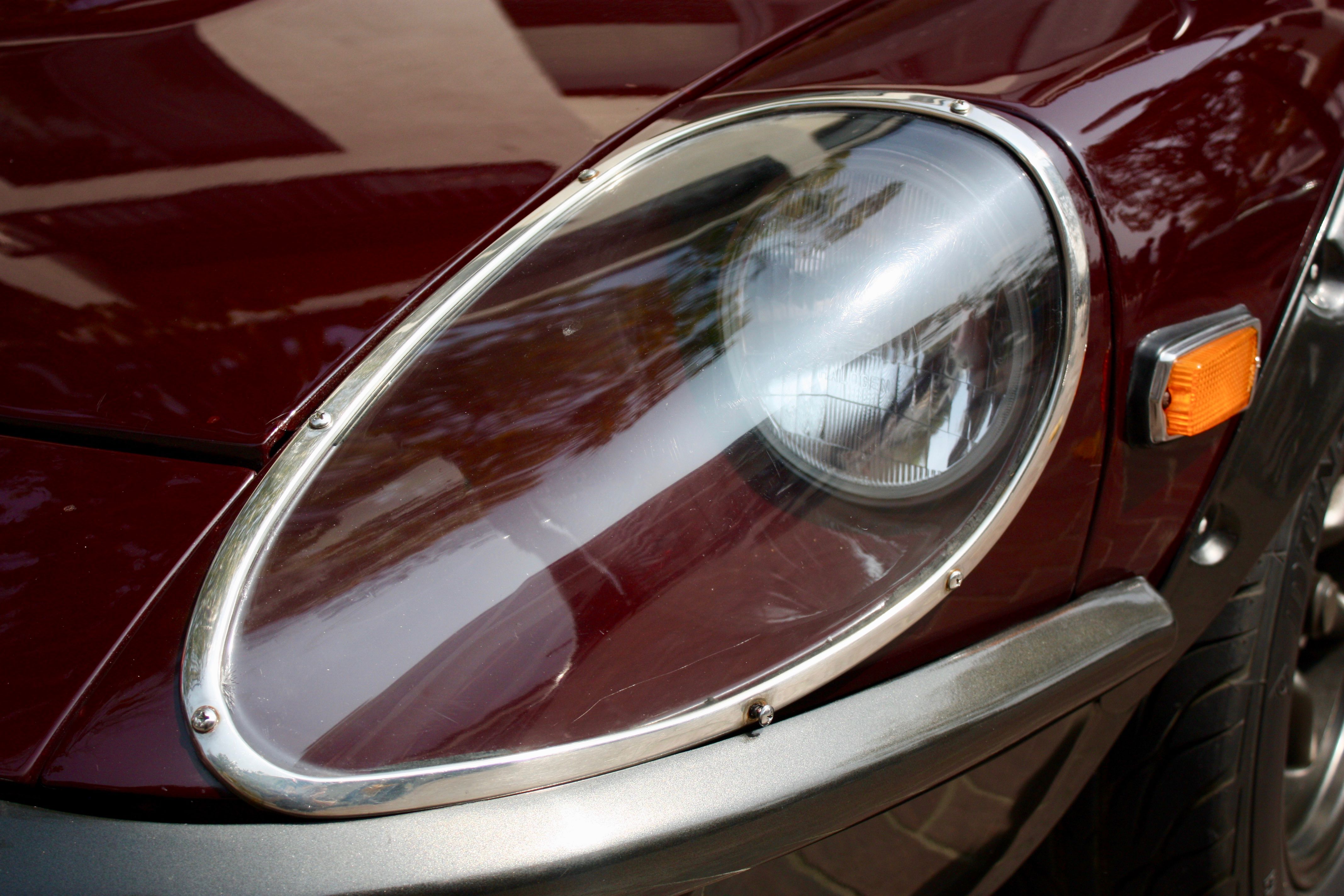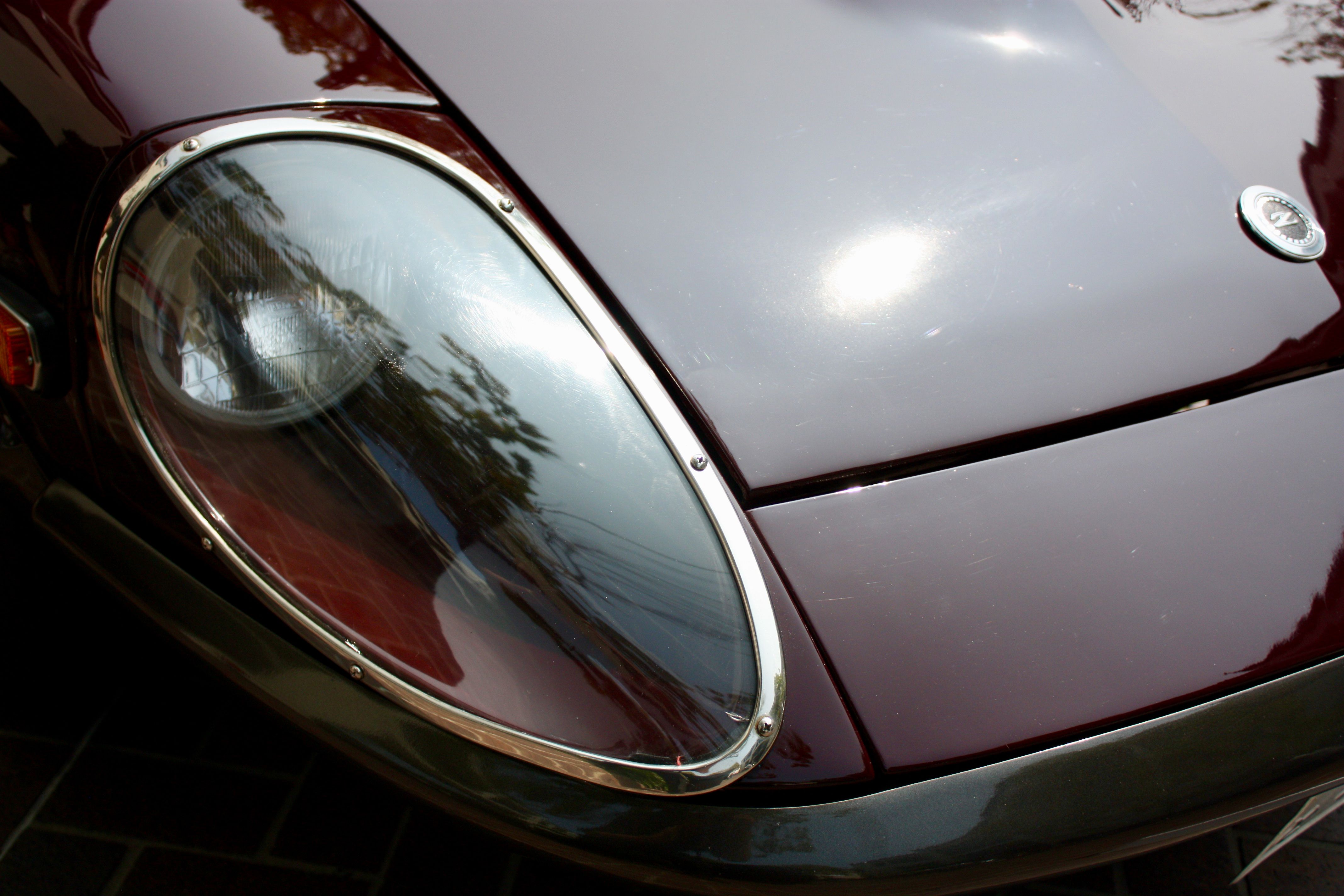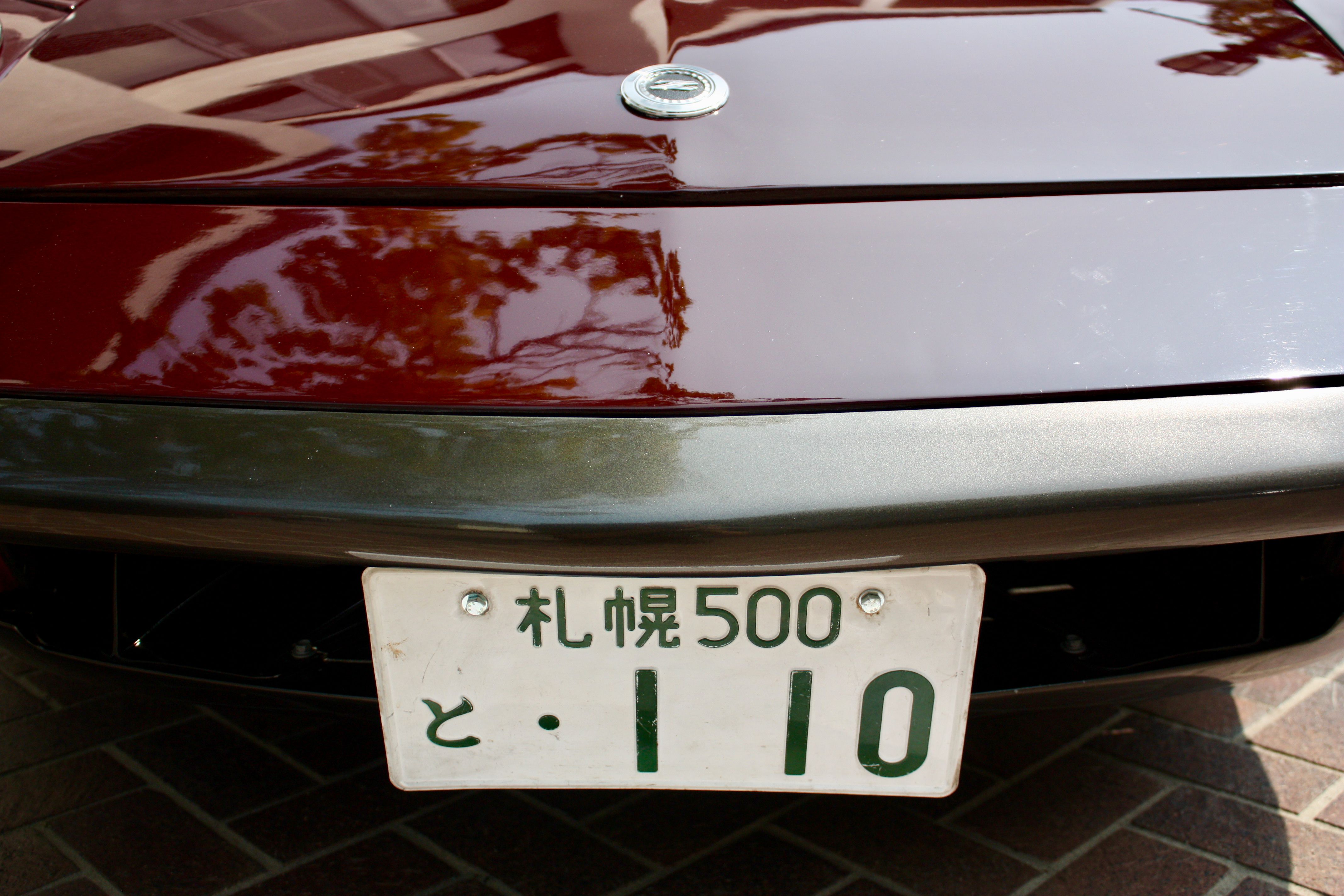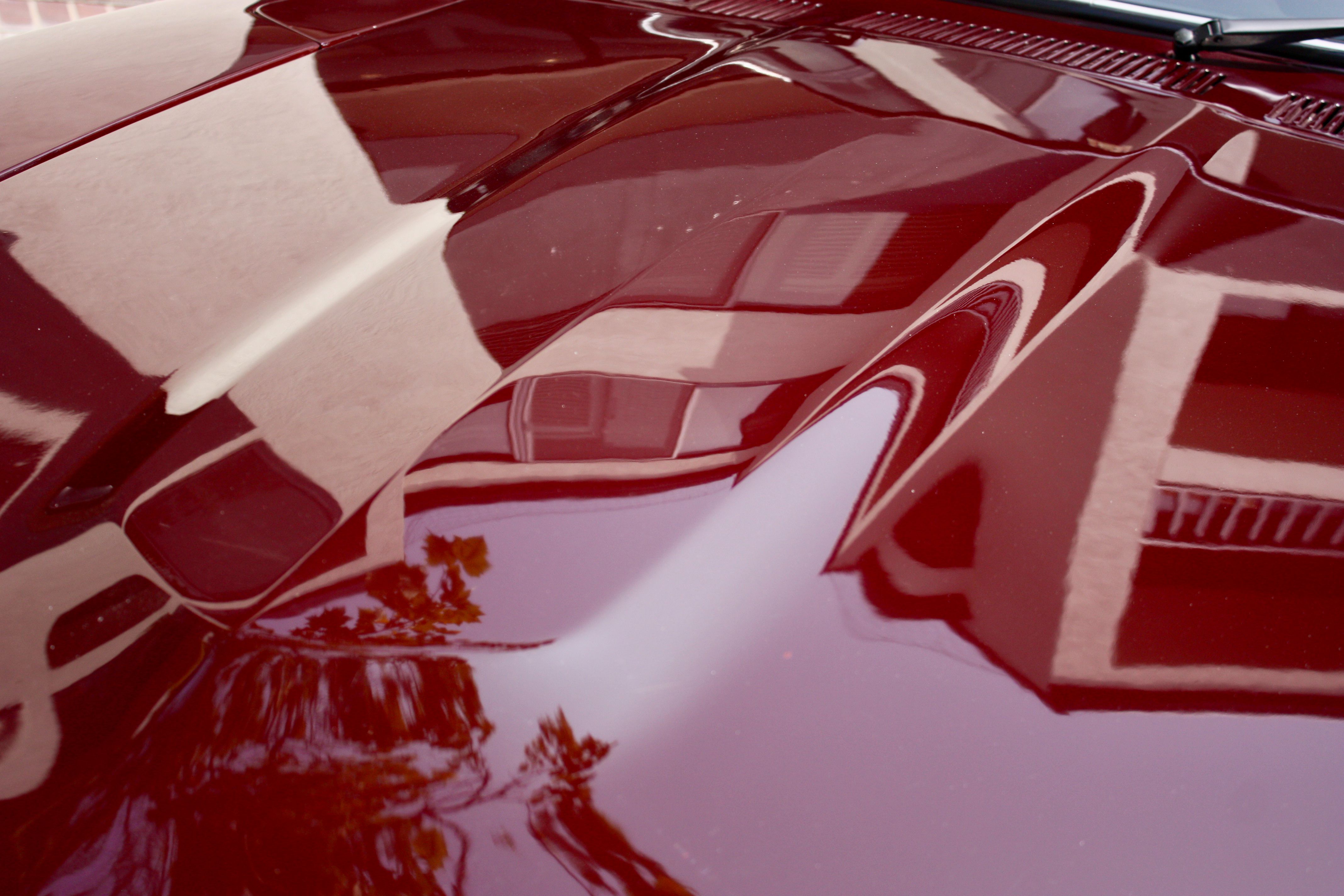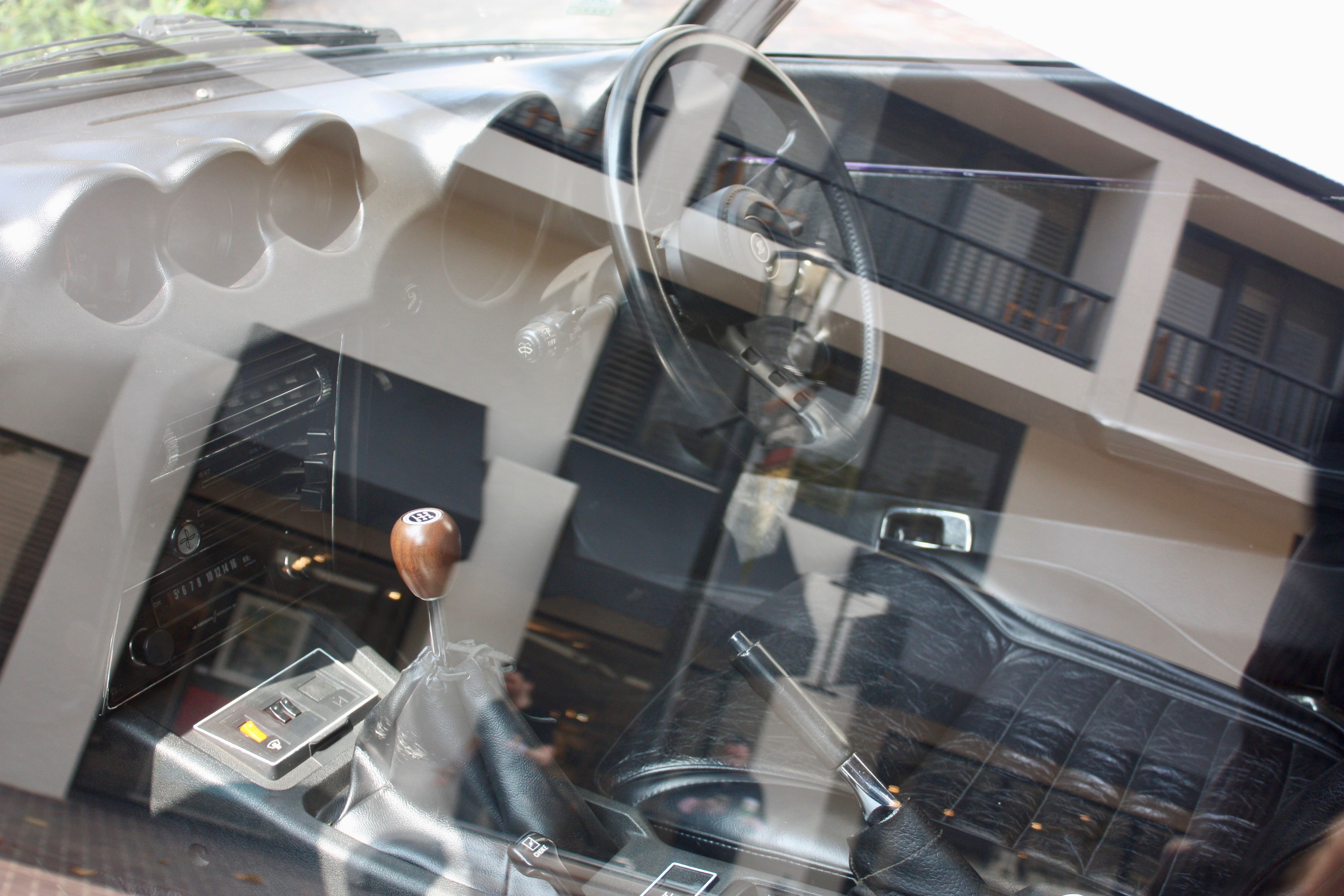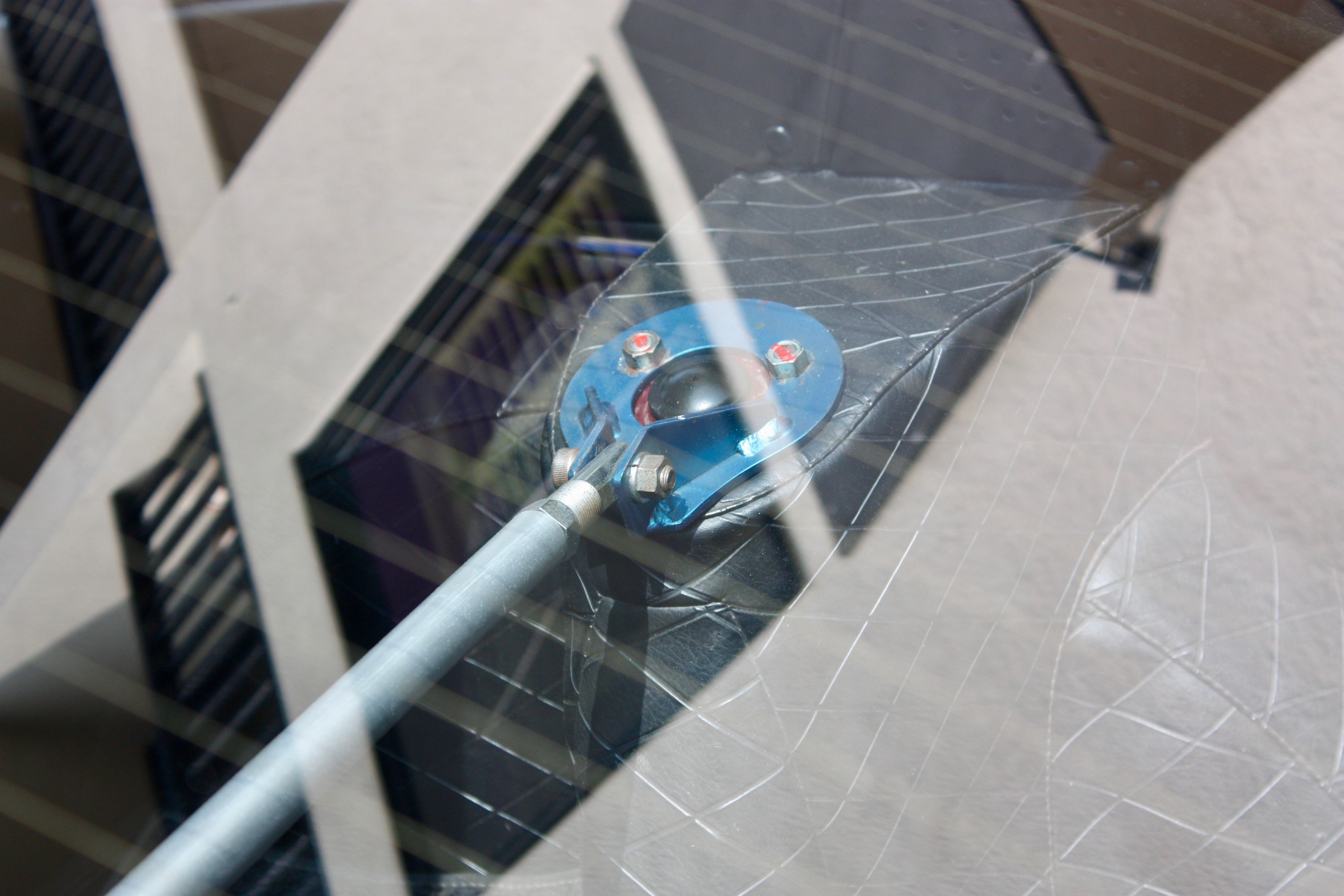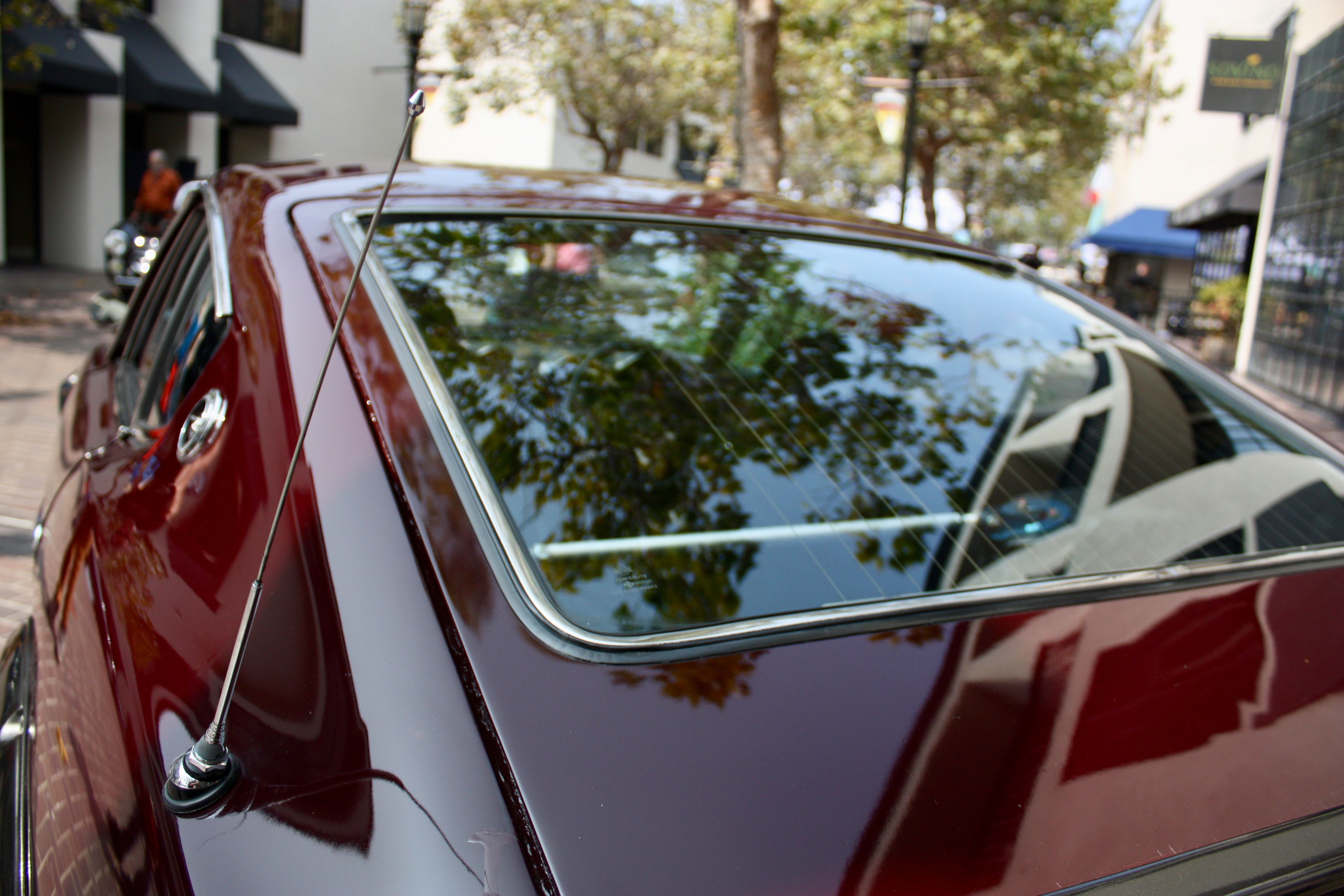In case you were unaware, the high-end collectible car market in the U.S. is finally starting to recognize all the great classics hailing from the Land of the Rising Sun. While European and American sports cars have always held a place of prominence, Japanese rides are now making some serious parallel headway, carving out a real niche at some of the biggest auctions of the year. One of the most easily recognized classic Japanese models has to be the original Nissan Z, known stateside as the Datsun 240 Z. Offering timeless good looks, excellent handling, plenty of power, and a great noise from the exhaust, the original Z brought modern Japanese technology to the masses, and is now highly sought after in the collector market. One of the rarer and more visually appealing examples of the early Z is the ZG, also known as the HS30-H Nissan Fairlady ZG, which brought even more style to bear with the addition of several unique body components, plus a sharper driving experience with new drivetrain components.
Continue reading to learn more about the 1972 Nissan Fairlady 240 ZG.
1972 Nissan Fairlady 240ZG
- Make: Array
- Model: 1972 Nissan Fairlady 240ZG
- [do not use] Vehicle Model: Array
1972 Nissan Fairlady 240 ZG Exterior Styling
The Z’s design was originally penned by Yoshihiko Matsuo, the head at Nissan’s Sports Car Styling Studio in the late ‘60s. The aesthetic is pure sports car stuff, with a fastback coupe rear end, a long hood line ahead of the cabin space, and a short tail section as well. Offered as both a three-door hardtop coupe and a three-door 2+2 coupe, it’s hard to beat the original Z for good looks.
However, Nissan managed exactly that with the ZG, upgrading the original’s style with a host of new parts, both for function and for form.
To help it stand out, the ZG gets a variety of new stuff up front, including a flatter nose section added at the end of the bumper and hood that makes the whole thing appear pointier next to the flatter, squarer nose on the standard Z. The new piece on the ZG is made from fiberglass, and is known as the “aero-dyna” nose.
Interestingly, the new nose section was also sold as an available option at U.S. dealers, where it was more commonly known as the “G-nose.”
Moving around to the car’s profile, the first thing that jumps out at us are those aggressive-looking over fenders, which are actually riveted directly to the body. Finished in a complementary shade of flat black, the ZG’s over fenders add a good amount of width to the ZG compared to the standard Z, and help to house even larger wheels while simultaneously giving a nod to the early Group 4 cars for which the ZG was homologated.
Just above and ahead of the front wheels, you’ll find the ZG’s unique fender-mounted rearview mirrors, which use short stalks and rounded mirror sections that look great, adding even more streamlining to the car’s profile. Speaking of the rollers, the wheels on this particular example were swapped out for period-correct eight-spoke four-lug Watanabe units, finished in a dark shade of bronzed gunmetal.
Buyers could get the ZG in just three exterior paint colors from the factory. The example pictured here is finished in its original Grande Prix Maroon, while alternative shades include Grande Prix Red and Grande Prix White.
1972 Nissan Fairlady 240 ZG Interior Design
This particular example keeps its original interior mostly intact, and looks pretty well-maintained, especially considering the age. That includes the original black vinyl upholstery, which is added to the doors, seats, and dash. There’s even a period-correct Nissan AM radio in the dash, plus the ZG’s unique “lap timer” clock in the dash.
One upgrade that’s out of the factory spec is the three-spoke Datsun racing steering wheel. We think it looks great, though, working well with the package thanks to its thick rim, tight stitching, and old-school appearance.
1972 Nissan Fairlady 240 ZG Drivetrain And Performance
Specs on the engine package include 2.4 liters in displacement, and an inline six-cylinder configuration. Also known as the L24, the powerplant utilizes 2,393 cc’s total with a cast iron block and alloy head. There’s also two valves per cylinder, a seven-bearing crankshaft, and a single overhead camshaft, plus a 9.0:1 compression ratio.
Bore and stroke are set at 83 mm x 73.7 mm, while redline is set at 7,000 rpm.
Mixing the air and go juice are twin SU-style Hitachi one-barrel side-draft carburetors.
Output for the set-up comes to 151 horsepower at 5,600 rpm and 146 pound-feet at 4,400 rpm. Top speed clocks in at 125 mph, while the run to 60 mph takes just under 8 seconds.
Routing the muscle to the rear axle is a five-speed manual transmission, which was the gearbox of choice specific to the ZG models. By comparison, other models (including those that went to the U.S. market) came equipped with a three-speed automatic and four-speed manual. The five-speed has a final drive ratio of 3.90:1, and was unfortunately never offered in the U.S. market.
To help it stand out even more, the ZG received a standard limited slip differential
Handling the heft is a four-wheel independent suspension, with MacPherson struts up front and Chapman struts in the rear. The front MacPherson setup was actually carried over from the Nissan Laurel C30, an older, boxier sedan model related to the original Nissan Skyline, and includes lower transverse and drag links, coil springs, telescopic dampers, and an anti-roll bar. The rear Chapman struts use lower wishbones, coil springs, and telescopic dampers. It should also be noted that this particular example now includes new, original-spec shock absorbers, and an upgraded rear strut brace that can be seen through the rear hatch glass.
To haul it all down, the ZG uses disc brakes in front and drums in the rear, both of which came as standard equipment. The front discs measure in at 10.7 inches, while the rear drums are 9.0 inches by 1.6 inches.
1972 Nissan Fairlady 240 ZG Prices
This particular example sold at the RM Sotheby’s Monterey auction in 2018 as Lot 271. Final price at the drop of the hammer came to $53,200.
While this example is mostly factory correct and original, there are a few things that may have dented the final auction price. For example, the upgraded wheels, steering wheel, and rear strut bar are great, but when it comes to auctions, non-original upgrades can make some serious deductions.
Still, this example is one of very few ZG’s in the U.S., which makes it quite desirable all the same. With all-original parts, though, we could see it fetching upwards of $80,000 or more.
1972 Nissan Fairlady 240 ZG Competition
Mazda Cosmo
They say a rising tide raises all ships, and the Mazda Cosmo is certainly enjoying the benefits of greater interest in Japanese classics, just like the Nissan Fairlady 240 ZG. Named at the height of the space race as a nod to the two-door’s futuristic design and powertrain, the Cosmo was the world’s very first dual-rotor-powered passenger car. With a novel engine package that could rev to 9,500 rpm, innovative styling, independent suspension, and plenty of performance, the Cosmo was a truly innovative machine. Just over 1,000 examples were built, which adds even more desirability to the overall package. Pricing at auction can range as high as $150,000 for the best examples, although most slot in around $70,000 to $90,000.
Read our full review of the 1967 - 1972 Mazda Cosmo.
Toyota 2000 GT
With the reemergence of the Supra nameplate, the continuing popularity of the new-gen 86, and the reverberating performance impressions left by the LFA, Toyota has some pretty good performance cred to its name. That said, if you back track the timeline a bit, you’ll inevitably run into this - the 2000 GT. Considered the first-ever Japanese supercar, the 2000 GT is a gorgeous machine to behold, with handsome cab-back coupé proportions, lovingly crafted body panels, and enough swoops and curves to make Jaguar E-Type owners blush. Under that long hood line you’ll find a 2.0-liter inline six-cylinder engine, which doles out as much as 150 horsepower and 130 pound-feet of torque. A five-speed manual sends power aft, while a limited-slip differential and four-wheel power disc brakes help it hang. These days, high-end examples of the 2000 GT can fetch upwards of seven figures at auction.
Read our full review of the 1967 - 1970 Toyota 2000 GT.
Final Thoughts
When it comes to the market for classic Japanese sports cars, it looks like the only way forward is up. This is especially the case for the 240 Z, one of the most iconic and recognizable examples of old school motoring from the Land of the Rising Sun.
The ZG is definitely one of the most sought-after examples of the original Z, and as prices continue to climb, buyers are sure to look for examples like this to add to their collection.
Further Reading
Read our full review on the 1972 Nissan Skyline GT-R.
Read our full review on the 1970 - 1978 Nissan Z-Car (240Z, 260Z, and 280Z).
The Story Behind The Car
The original Nissan Z is known by a number of different names, including its chassis code S30, its stateside name 240Z under the Datsun marque, and in its native Japan, the Fairlady Z.
Built between 1969 and 1978, the original S30-based Z line included the Datsun 240 Z, the Datsun 260 Z, and the Datsun 280 Z.
And rightfully so. The Z makes exactly the right first impression, with all the traditional sport car cues right out of the box. Not only did the Z look great, but it also handled well, made a great noise, provided loads of thrust, and was easy to maintain, all for a very reasonable price tag when sold new.
The Z is also quite famous for its role as one of Japan’s first homologated sports cars and is often credited with lighting the fires of interest in the Japanese import performance industry in the U.S.
Sold in Japan as the Fairlady Z, Nissan pushed the S30 in the U.S. market under the Datsun brand as the 240 Z. One of the key figures in bringing the Z to the U.S. market was Yutaka Katayama, president of Nissan Motors USA at the time, and now affectionally known as “Mister K.”
Nissan originally intended on selling the Z as the Japanese answer to the British-built MGB GT. As such, Datsun USA priced the 240 Z to about $200 within the MGB’s price tag, and side-by-side with the weathered, been-there-done-that MGB; the Japanese contender definitely stood out as the more desirable option of the two.
Out of this long list of accomplishments, we have the ZG, now recognized as one of the most desirable iterations of the classic Z ever made.
Under the hood, however, the ZG is more or less identical to the standard Z. That means it gets the 240’s original SU-style Hitachi one-barrel side-draft carburetors, which Nissan replaced in 1973 with the 260 Z’s Hitachi one-barrel side-draft carburetors, a move intended to make the cars compliant with updated emissions regulations. The new carbs hurt the car’s performance, so in 1975, Nissan added L-Jetronic electronic fuel injection from Bosch, which helped up performance considerably.
This particular example of the ZG pictured here is quite close to the factory-original, and RM Sotheby’s contends it is “well known among Japanese car collectors.”
The car was first delivered new in the Shinagawa ward of Tokyo, making it stateside sometime afterwards. To keep it sittin’ pretty, the previous owner revitalized it with a new paint job, once again covering it in its original hue of Grande Maroon. This particular ZG also received new shocks and new brake lines, both of which fall within the original factory spec.
Over the length of its career, the 240 Z nameplate collected several motorsport competition wins, including a victory in professional rally in 1973 at the 21st East African Safari Rally with Shekhar Mehta in the driver’s seat.
Other notable victories include those won in SCCA competition by Bob Sharp Racing in the ‘70s, as well as the wins collected by Brock Racing Enterprises (BRE) and John Morton with the #46 240 Z in the SCCA C Production class, in which Morton took home back-to-back title victories in 1970 and 1971.
In 1979, Nissan replaced the S30 Z with the updated S130-based 280 ZX.

